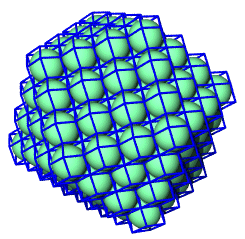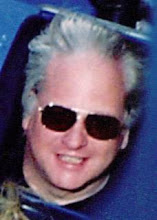My impression is the Piaget type studies, including the original studies themselves, forked into rank and file pedagogue armies in support of the various disciplines, but the sciences were
more successful.
The math teachers used constructivism on the rebound, having blown the New Math revolution, so it looks like a "trying to get it right this time" move, i.e. kinda lame.
The sciences, however, were lucky to get Robert Karplus, a theoretical physicist at the top of his game who nevertheless saw Science for Children as a yet higher calling, i.e. his skills as a scientist would be yet more deeply tested. How many research mathematicians took this route?
By extension, computer science, already with science in the title, would be better off tracking with Karplus than with anything corresponding in math teaching circles. Constructivism is floundering over there, having lost hold on Calculus some time ago, to the more physics minded (
moves afoot to disown Calculus completely, rebranding as "Real Analysis" even at the high school level, to give that more "pure math" flavor).
NCTM has offered no leadership, just angry defensiveness, with lots of political projections, as to whom their opponents might be, getting in the way. The sciences haven't flown off the rails to this degree, and indeed are moving in to clean up the mess, because children
still need a good education -- a constant drum beat in the background through all this (there's
time pressure i.e. deadlines to be hit or missed).
But what about constructivism within computer science itself?
There's still some of that European "guru on a mountain top" chauvinism (most constructivism has this Euro flavor) in the
Smalltalk contingent, which from the beginning has expressed
the most interest in pedagogy for young children, in alliance with MIT ("
constructionism") for awhile, during the Logo chapter (
Logo was maybe too much a
bastardized LISP to win much acceptance in higher academe and/or industry, and we learned what a dead albatross this "teaching language" moniker could become -- Pascal went that way too, though lives again in Delphi).
I think this compsci brand of constructivism is in an interesting position, at a crossroads. On the one hand, a fairly successful application of Piaget in the sciences, via Karplus et al. On the other, a disaster in the making, but therefore with lots of ferment, room for improvement.
Python and
CP4E have been in rescue mode vis-a-vis this
disaster zone for some time. We have more realism in our talk than the starry eyed "unschoolers," always planning for the revolution, but never really implementing anything, except half-assed stuff they themselves are the first to complain about, distance themselves from.
Probably to Python's advantage is it
never had this exclusive "
for children" packaging, and isn't about to develop that now, nor receive that "teaching language" kiss of death that so many'd bestow as their sick and twisted idea of a blessing.
Python is more the property of practicing scientists, in that they use it as a glue language, in a mix with whatever else does good work, such as Matlab, even old FORTRAN repositories (still a source for some of the fastest linear algebra libraries in the business they tell me -- and you can
wrap them in Python, Perl whatever).
The final puzzle piece, which I've been showing around only recently, is where the Fuller School comes in, using Python as a strong P2P (peer to peer) teaching vector, complete with
MITEs and Jitterbug. Again, science is having an easier time with these, given their practical and engineering applications, while K-12 mathematics (K-5 in particular) continues to wallow in confusion, poorly served by its various brands of shrink (
analyst).
Again, I think the choice is clear. Students of early mathematics need Python more than the early science students do (same kids, just different tracks). As a
Fuller Schooler, I'm encouraging the recently joined Smalltalker crowd to
organize more like the scientists, but
focus more like mathematicians. Their radical "unschooling" ideas will continue to serve the homeschoolers, various pilot academies open to testing new philosophies of education.
But we won't let those threads dilute our focus. We have our
war colleges, their feeder systems, our ADA-like, DoD style collaborative environments, wherein solipsistic lone wolf intellectualism is
not the name of the game. Extreme Programming (XP), other adult-minded team play, the latter long a feature of USA public schooling, will continue serving future management teams with people ready for group action, not just for "home alone" type stuff against "bad guys" or whatever (we're not loser couch potato cop show watchers). Design Science R Us.








